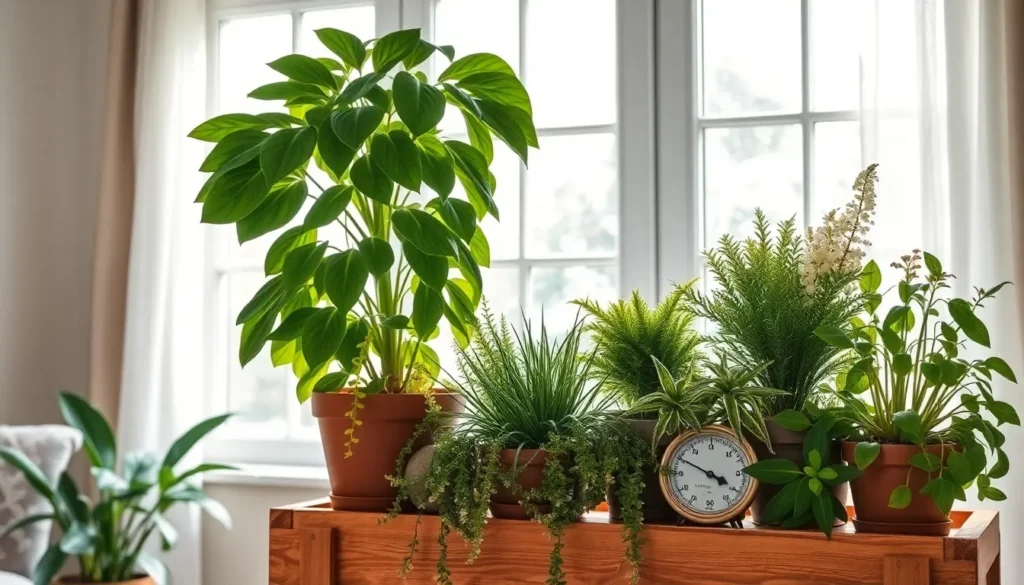As winter’s chill settles in, our indoor greenery becomes a vital source of warmth and life, bridging the gap to the vibrant garden outside. For both budding plant enthusiasts and seasoned green thumbs, the colder months present unique challenges and opportunities for nurturing our leafy companions. Understanding the specific needs of your houseplants during this season is not just a task but an enriching experience that deepens your connection with nature, even when the garden is at rest.
In this article, you’ll discover practical tips to ensure your houseplants thrive until spring returns. From adjusting watering routines to optimizing light conditions and tackling common winter woes, we’ll guide you through each step with clarity and confidence. Whether you’re tending to a single beloved fern or an entire indoor jungle, these insights will empower you to create a sanctuary of health and vitality amid winter’s embrace. Embrace this journey with us as we explore the art of winter houseplant care, ensuring your indoor garden remains a lush retreat, no matter the weather outside.
Adjust Watering Frequency Carefully
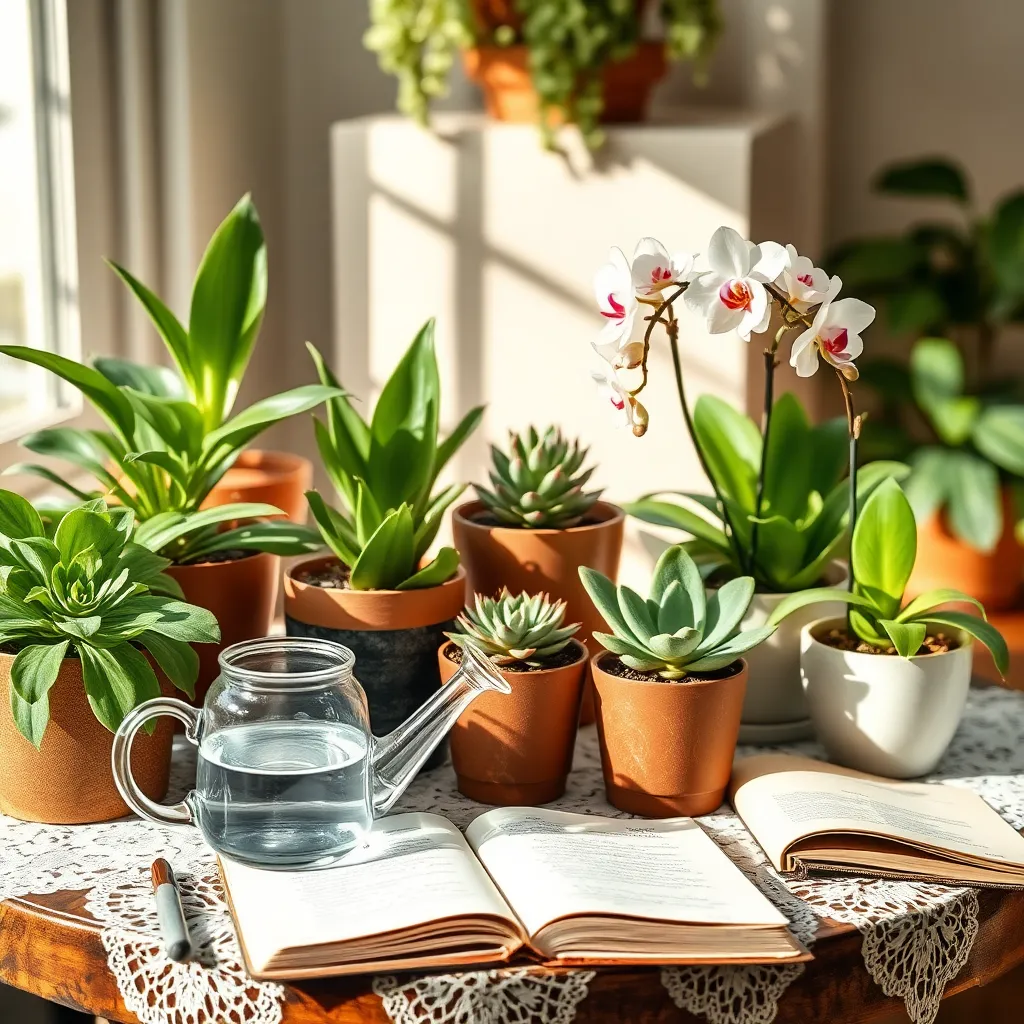
During winter, houseplants typically require less water due to reduced growth and lower evaporation rates. It’s crucial to monitor your plants and adjust your watering schedule accordingly to prevent overwatering, which can lead to root rot.
One practical way to determine if your plant needs water is the soil moisture test. Insert your finger about an inch into the soil; if it feels dry, it’s time to water, but if it’s still damp, hold off for a few days.
For those seeking a more precise method, consider using a moisture meter, which can provide accurate readings of soil moisture levels. This tool can be particularly helpful for beginners who are uncertain about when to water their plants.
In general, most houseplants, like pothos or snake plants, only need watering every 2-3 weeks in winter. However, plants in smaller pots or those with specific needs, such as ferns, might require more frequent attention.
Provide Adequate Humidity Levels
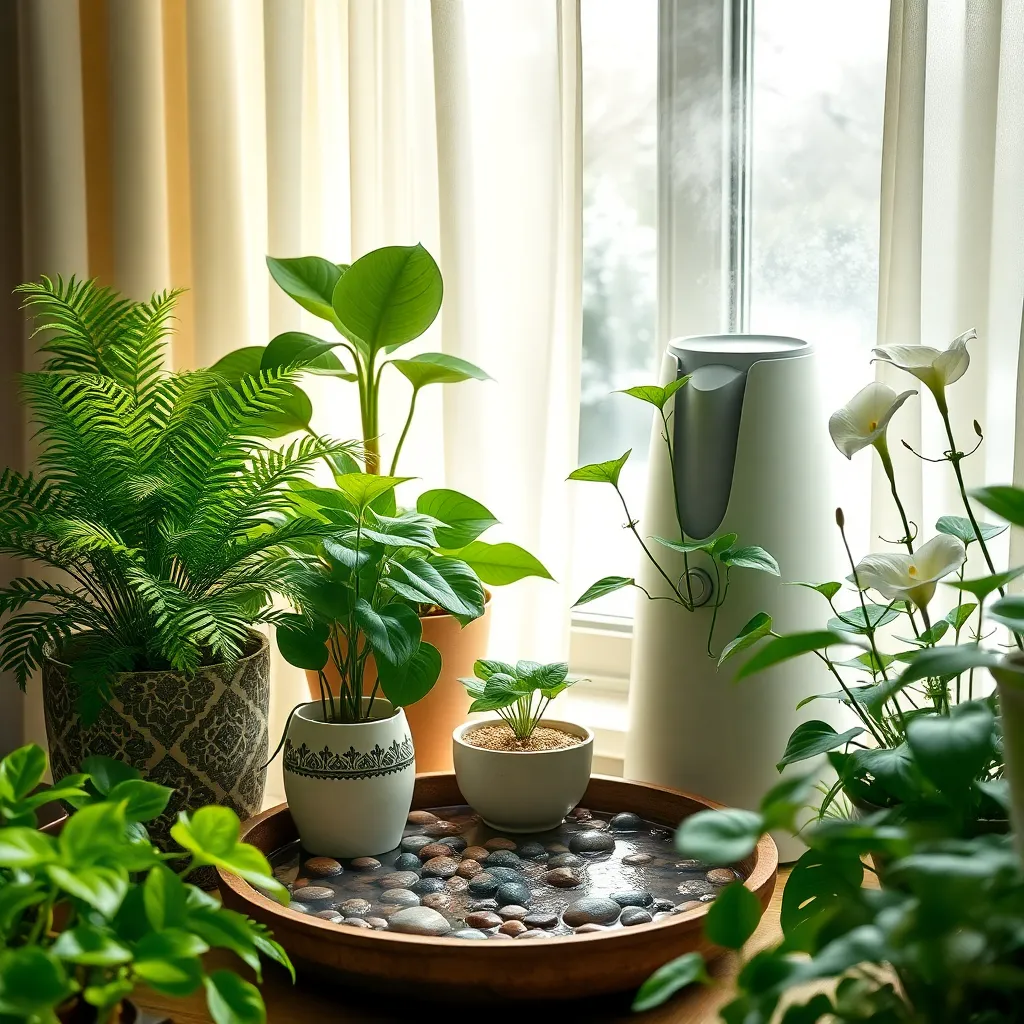
In winter, houseplants can suffer from low humidity levels due to indoor heating systems. To combat this, consider using a humidifier to maintain optimal conditions for your plants.
Grouping plants together is another effective strategy, as they can create a microclimate with increased humidity. Additionally, placing a shallow tray filled with pebbles and water near your plants can help; as the water evaporates, it adds moisture to the air.
For a more advanced approach, misting your plants can provide a quick humidity boost, but be sure to focus on plants that benefit from this method, like ferns and orchids. Be mindful not to over-mist, as this can lead to fungal issues, particularly in cooler climates.
It’s also essential to monitor your home’s humidity levels with a hygrometer, aiming for around 40-60% humidity, which is ideal for most houseplants. If levels drop too low, you might notice symptoms like browning leaf tips or wilting, indicating that your plants need more moisture in the air.
Optimize Indoor Lighting Conditions
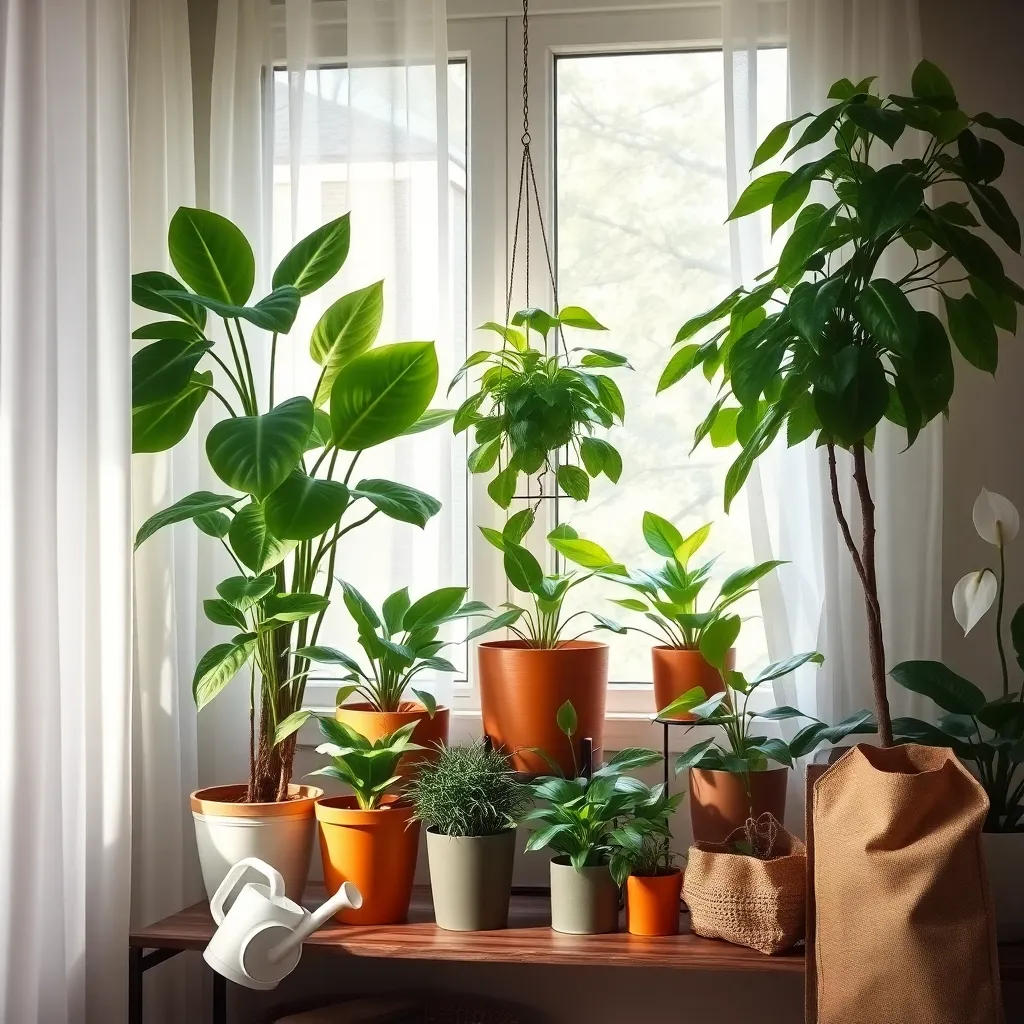
During the winter months, natural light levels drop, which can be challenging for houseplants. Supplement natural light with grow lights to ensure your plants continue to thrive. Position your grow lights about 6 to 12 inches away from the foliage to provide adequate coverage without causing heat damage.
Consider using full-spectrum LED grow lights, which mimic natural sunlight, to promote healthy plant growth. These lights are energy-efficient and can be adjusted to suit the specific needs of your plants, making them a great investment for indoor gardening. Set a timer for your grow lights to maintain a consistent light schedule, typically 12 to 16 hours per day, depending on the plant type.
Combining natural and artificial light sources can help optimize light conditions. Place plants near south or west-facing windows to maximize exposure to natural light during the day, and supplement with grow lights in the morning and evening as needed. Regularly clean windows and light fixtures to ensure maximum light penetration and prevent dust buildup that can block light.
For beginners, an easy solution is to rotate your plants weekly to ensure even light distribution and prevent them from leaning towards the light source. Experienced gardeners might explore reflector panels to direct more light onto their plants, enhancing growth without additional electricity costs. Remember, monitor plant response to these changes, as some adjustments may be necessary to find the right balance for your specific indoor environment.
Inspect for Pests Regularly
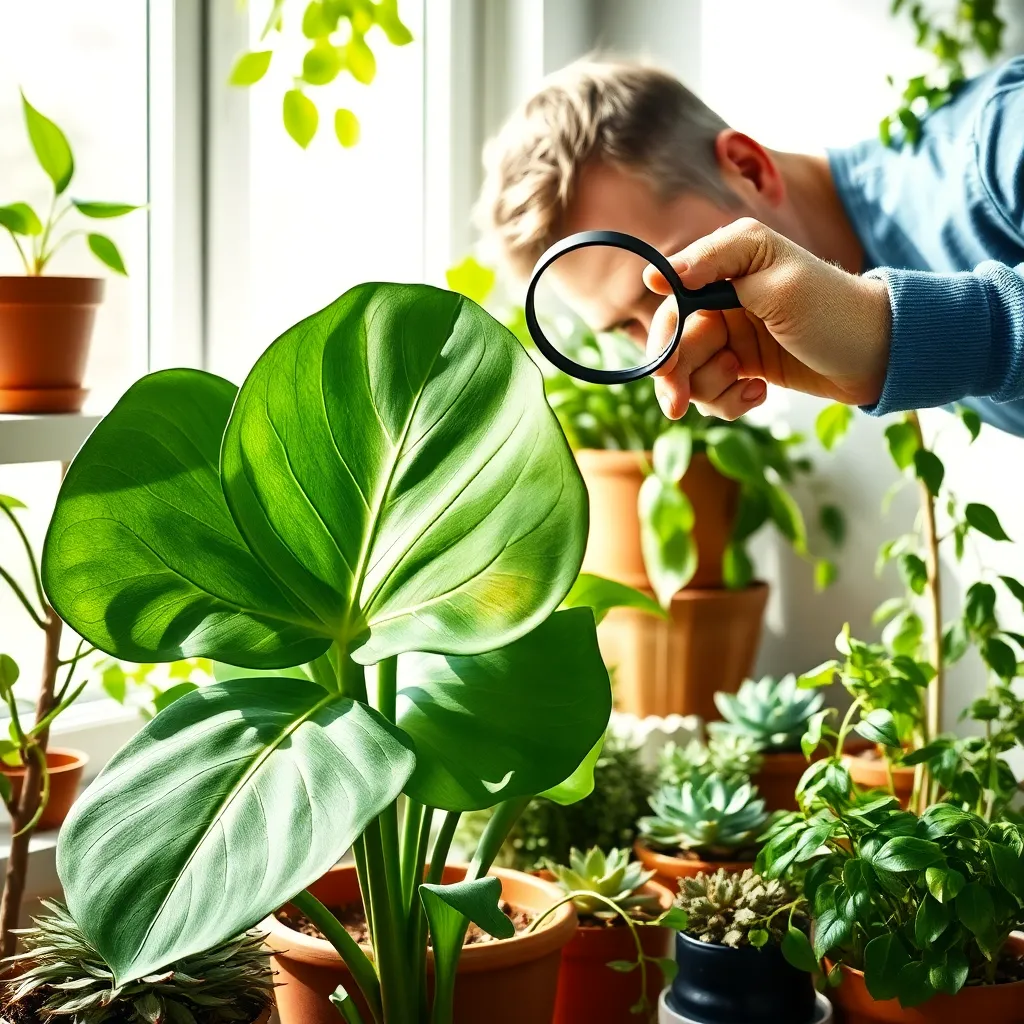
Regularly inspecting your houseplants for pests is crucial, especially in winter when indoor conditions can favor their growth. Check the undersides of leaves and around the soil surface where pests like spider mites, aphids, and fungus gnats often hide.
To effectively manage pest issues, use a magnifying glass to spot tiny insects that may be hard to see with the naked eye. Early detection is key to preventing infestations from spreading to your other plants.
Once you spot pests, act swiftly by isolating the affected plant to prevent the pests from migrating. You can use insecticidal soap or neem oil as a natural remedy, applying it according to the product’s instructions for best results.
For a more advanced approach, consider maintaining a regular schedule of preventive care by wiping leaves with a damp cloth. This not only removes dust but also helps in detecting initial signs of pest activity early on.
Prune and Clean Foliage
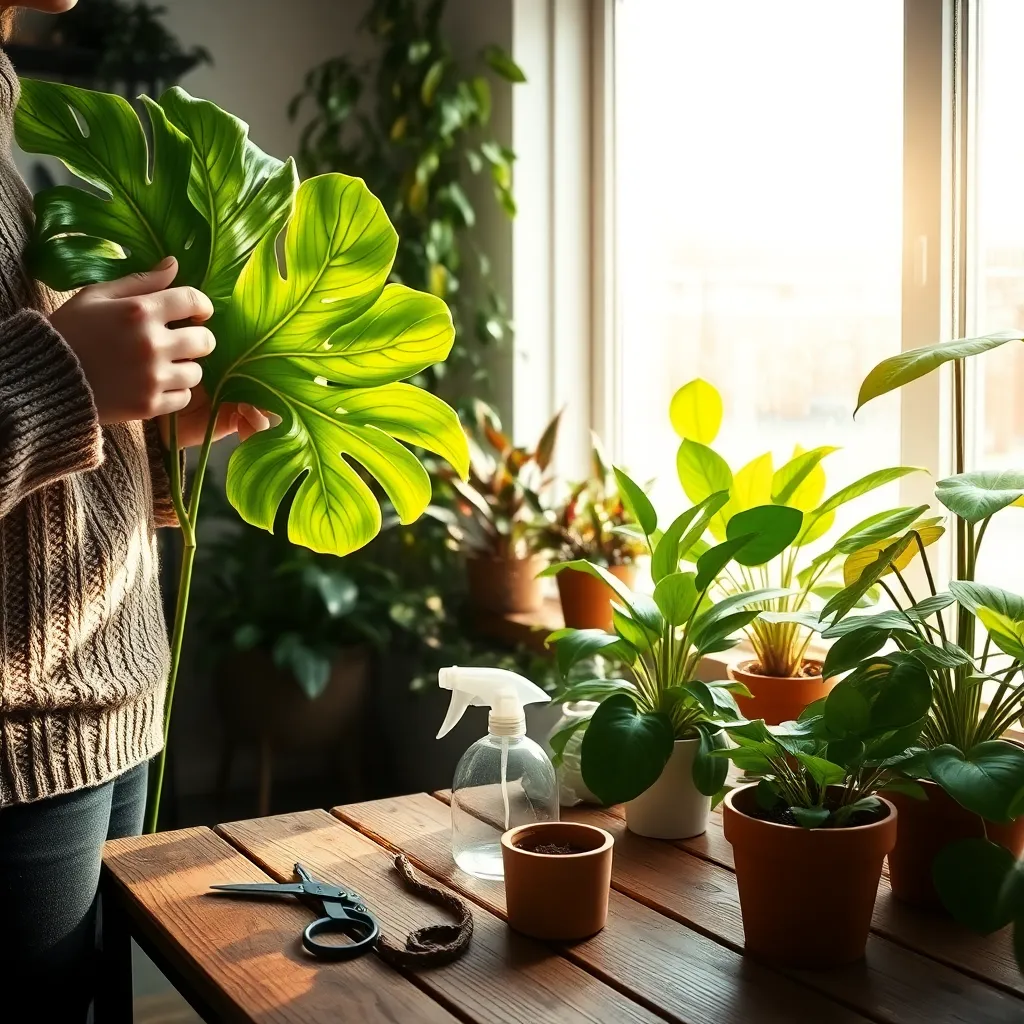
Maintaining healthy foliage during the winter months is crucial for your houseplants. Start by carefully examining each plant and look for any damaged or dead leaves that should be removed to prevent disease spread.
Use a pair of sharp, clean scissors or pruning shears to make clean cuts. Prune selectively to shape the plant and encourage new growth, but avoid over-pruning, which can stress the plant.
Cleaning the foliage is equally important as pruning. Dust can accumulate on leaves, blocking sunlight and reducing photosynthesis, so gently wipe leaves with a damp cloth every couple of weeks.
For plants with smaller or delicate leaves, consider using a soft brush to remove dust and debris. Regular cleaning not only helps the plant thrive but also gives you a chance to check for pests and overall health.
Conclusion: Growing Success with These Plants
In nurturing both houseplants and relationships, the winter season offers a unique opportunity for growth and resilience. We’ve explored five key concepts: understanding your plant’s specific needs, adjusting watering routines, ensuring adequate light, maintaining humidity, and providing a stable temperature. These principles reflect the care and attention essential in fostering healthy relationships, emphasizing the importance of awareness, adaptability, and consistency.
As an actionable next step, take a moment today to assess both your plant’s and your relationship’s environments. Consider what adjustments might be needed to promote flourishing growth. Whether it’s moving a plant to sunnier windows or initiating a heartfelt conversation, small changes can lead to profound results.
Remember to bookmark this article as a go-to guide for nurturing both your green companions and personal connections. With these insights at your fingertips, you’re well-equipped to cultivate a nurturing environment that fosters lasting bonds and vibrant growth.
Looking ahead, embracing these concepts not only ensures the health of your houseplants but also lays a strong foundation for enduring relationship success. By caring deeply and acting wisely, you create a flourishing future for all your cherished connections.

